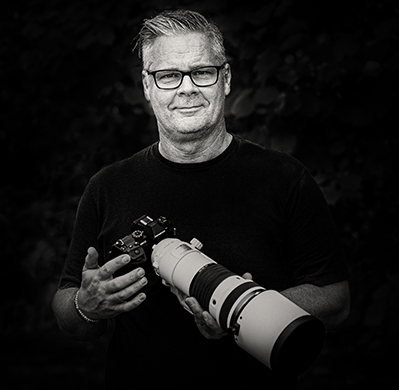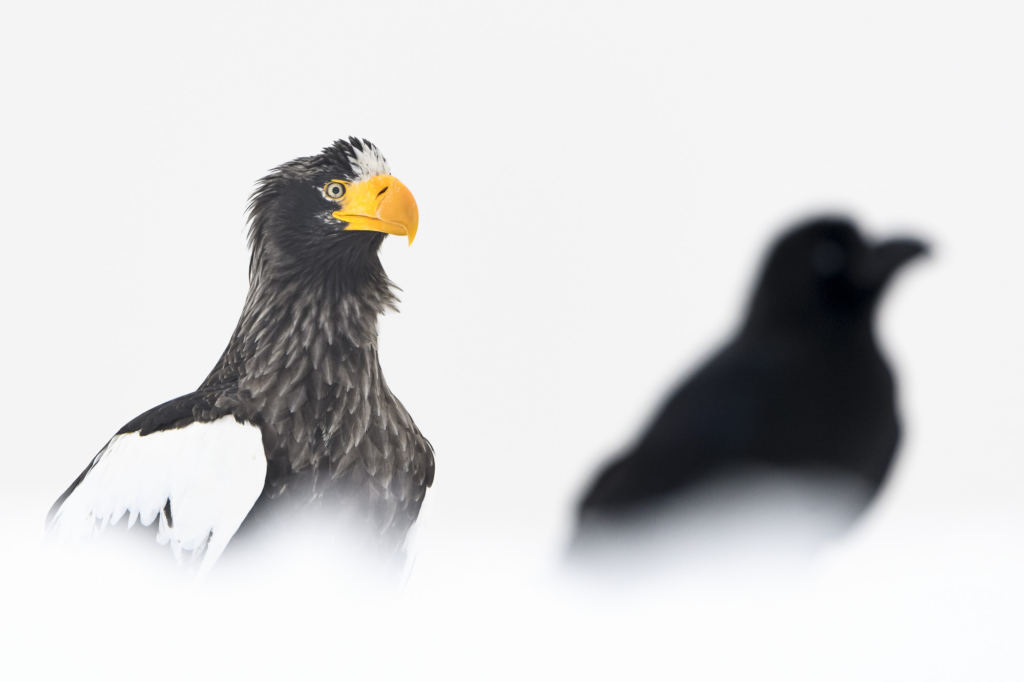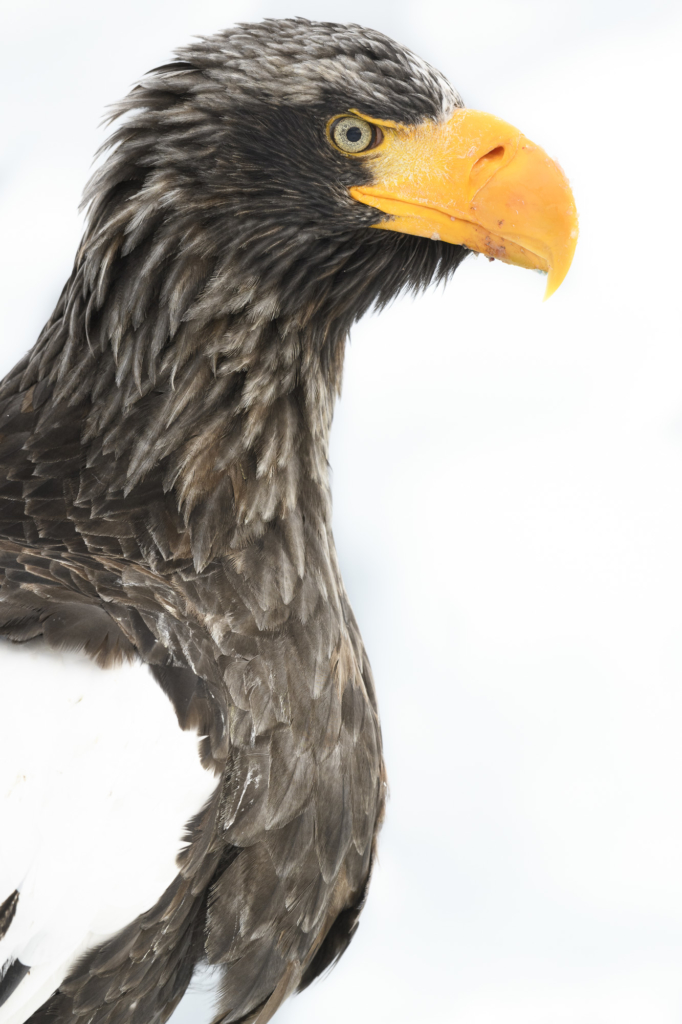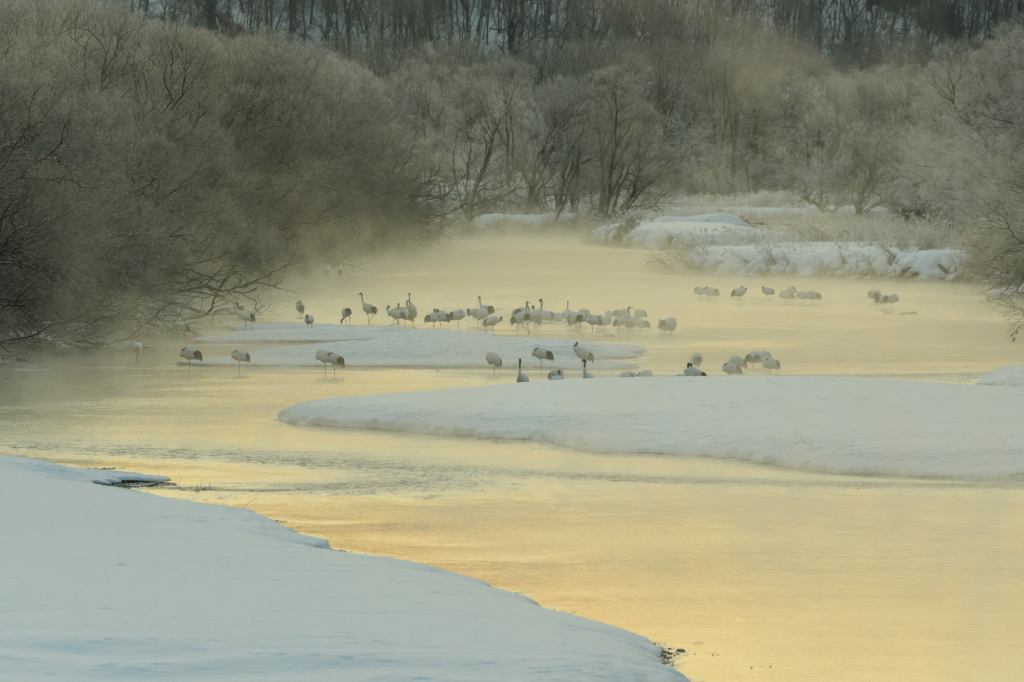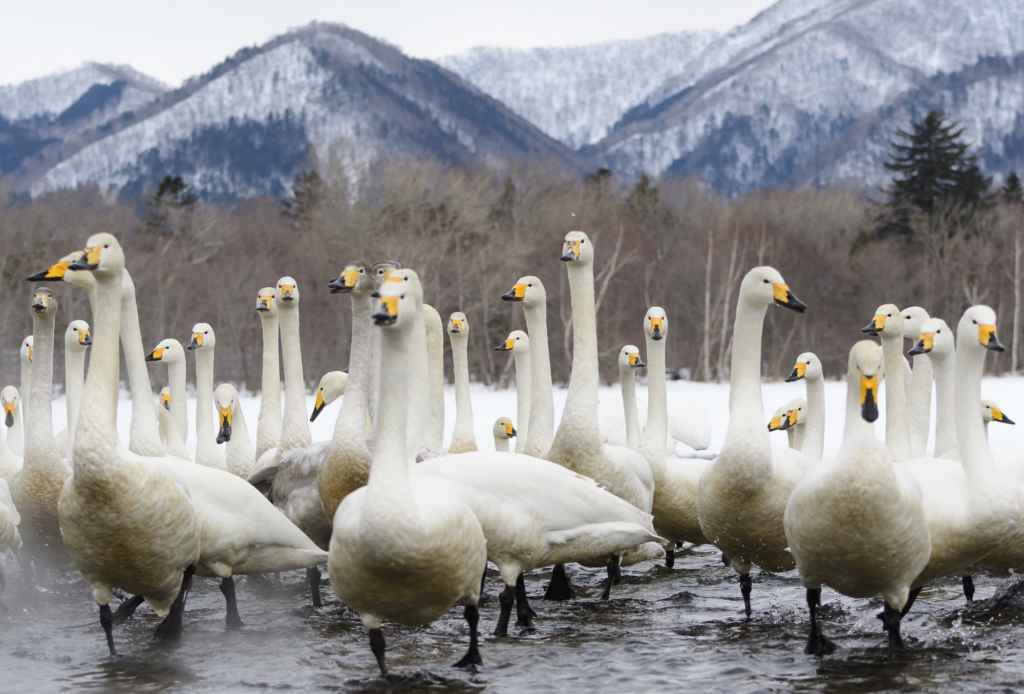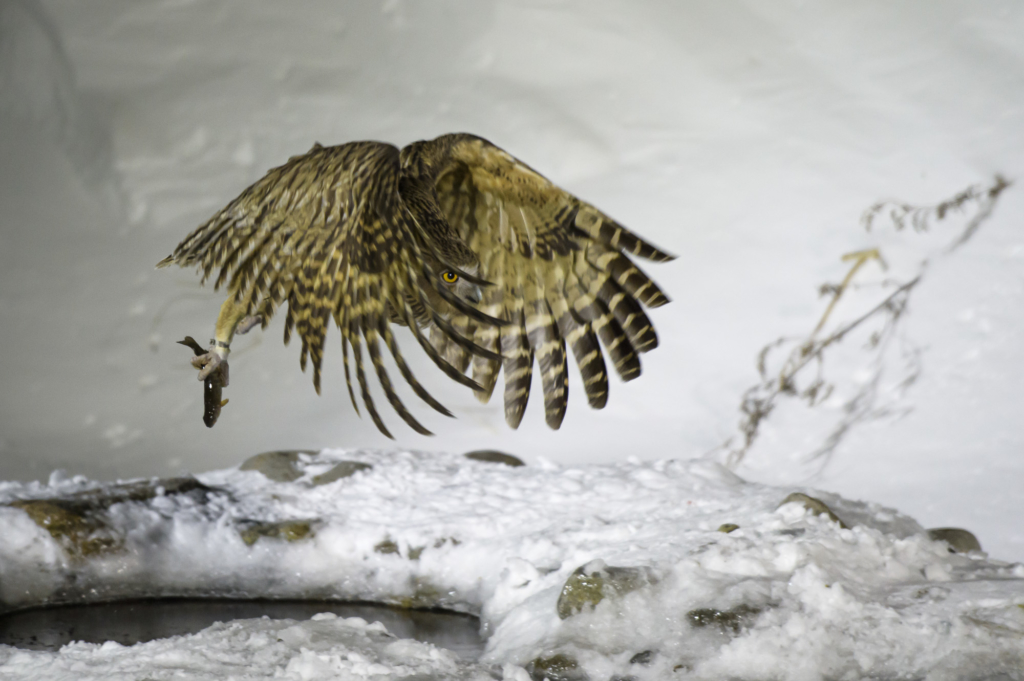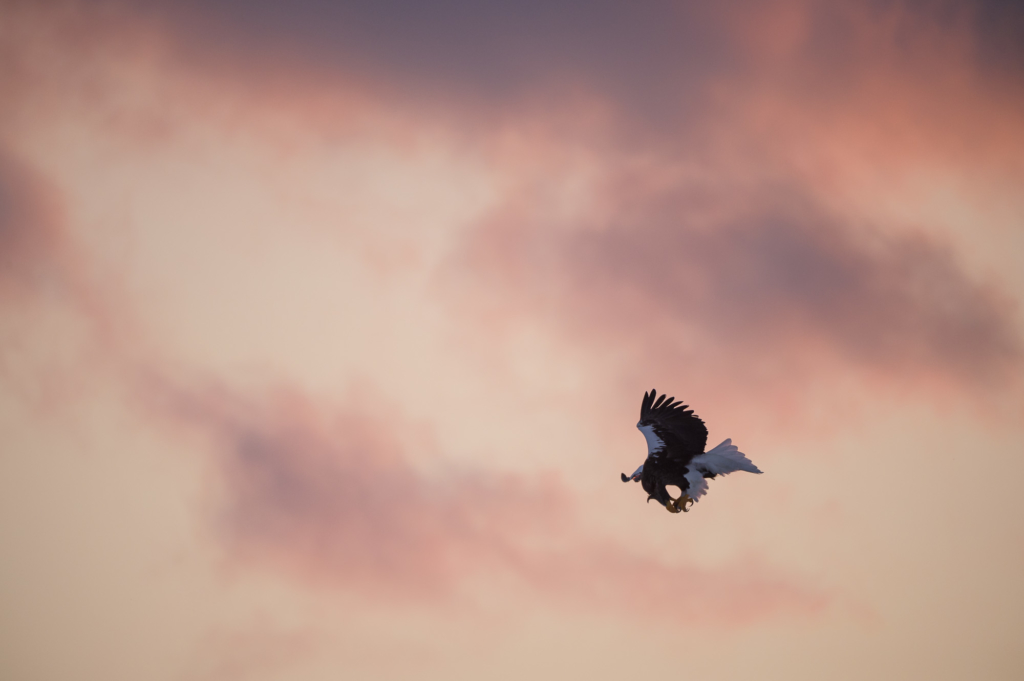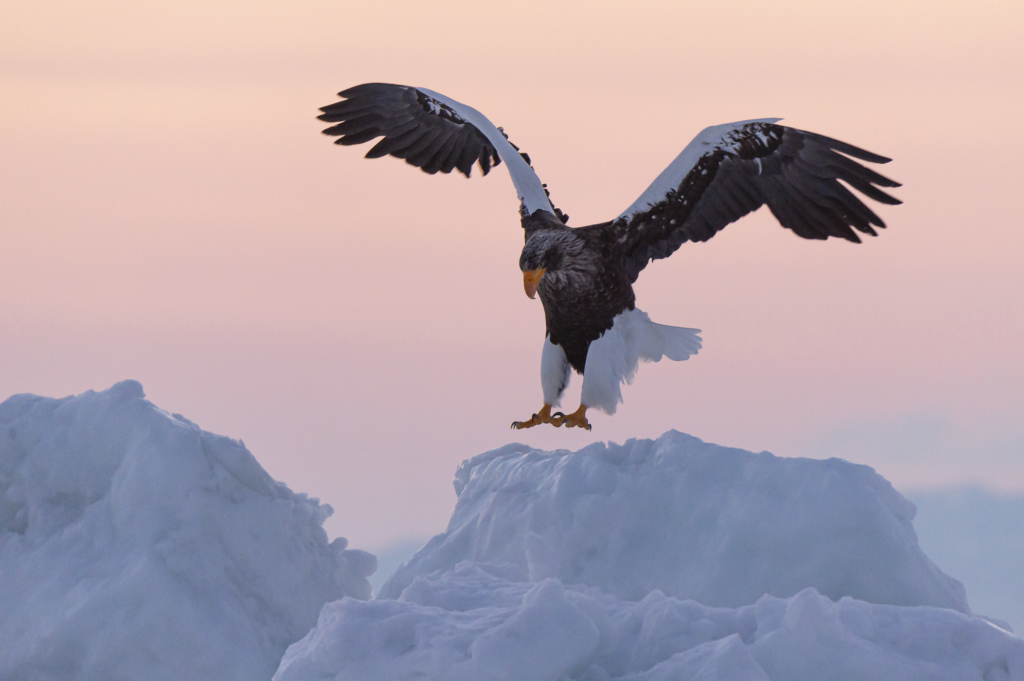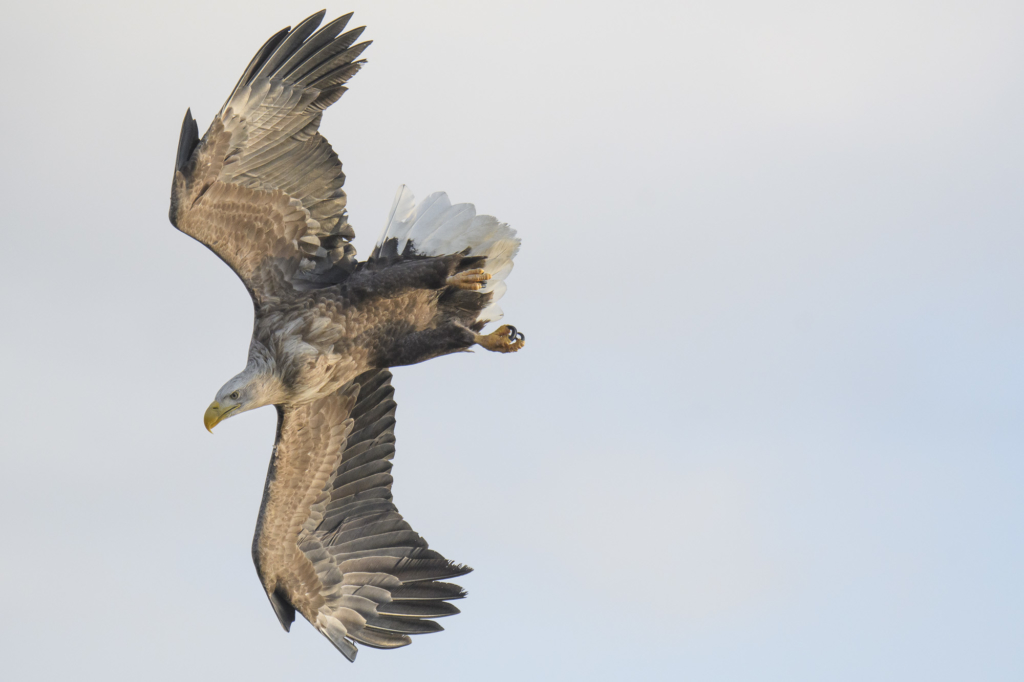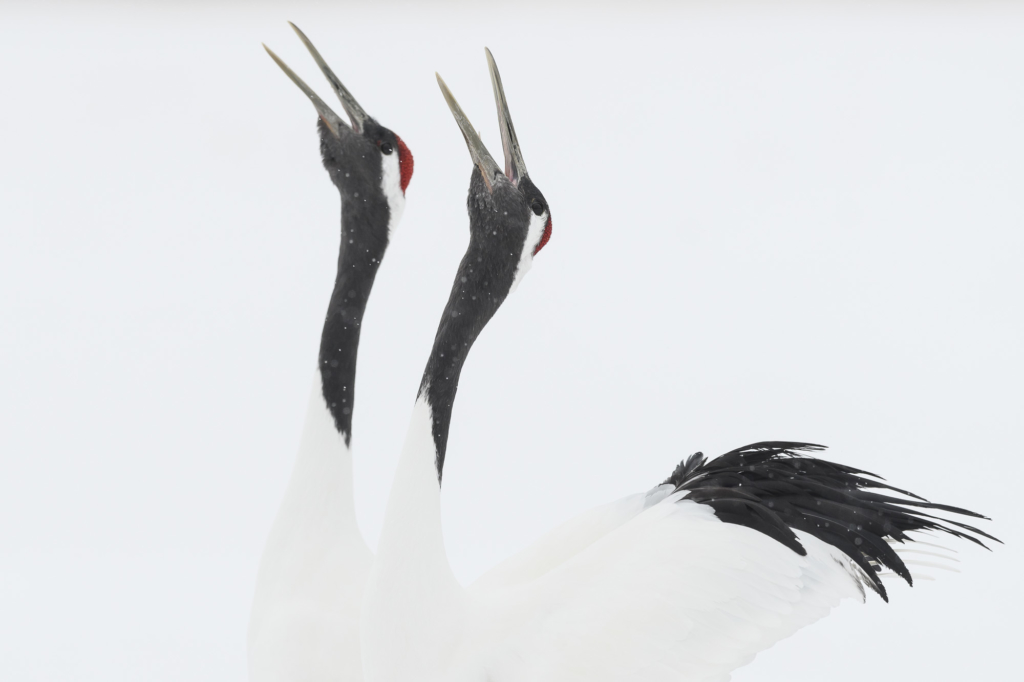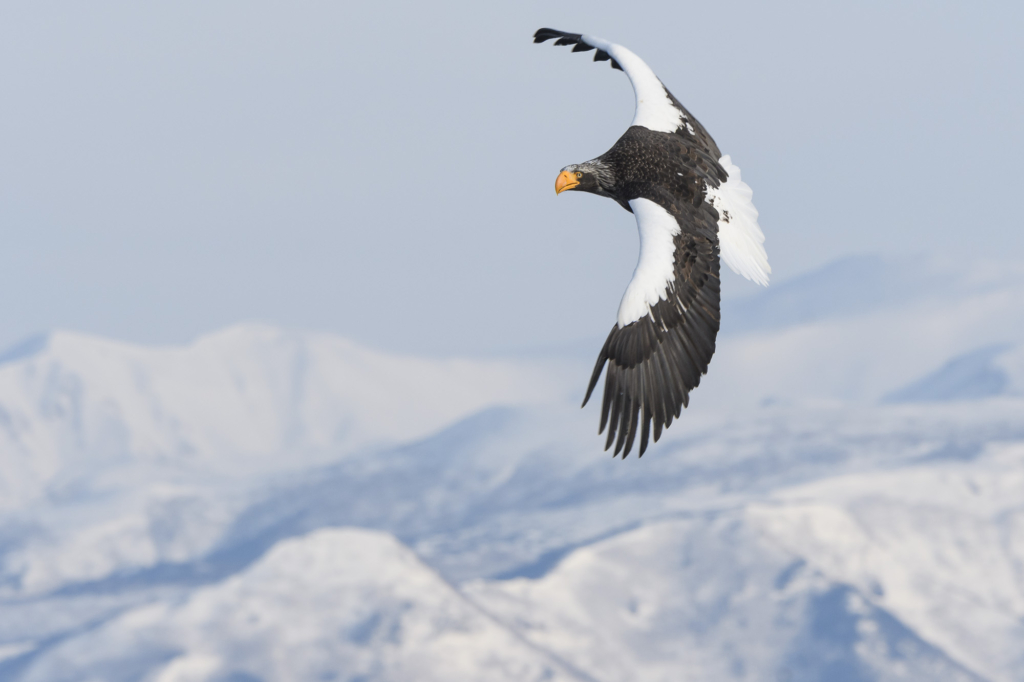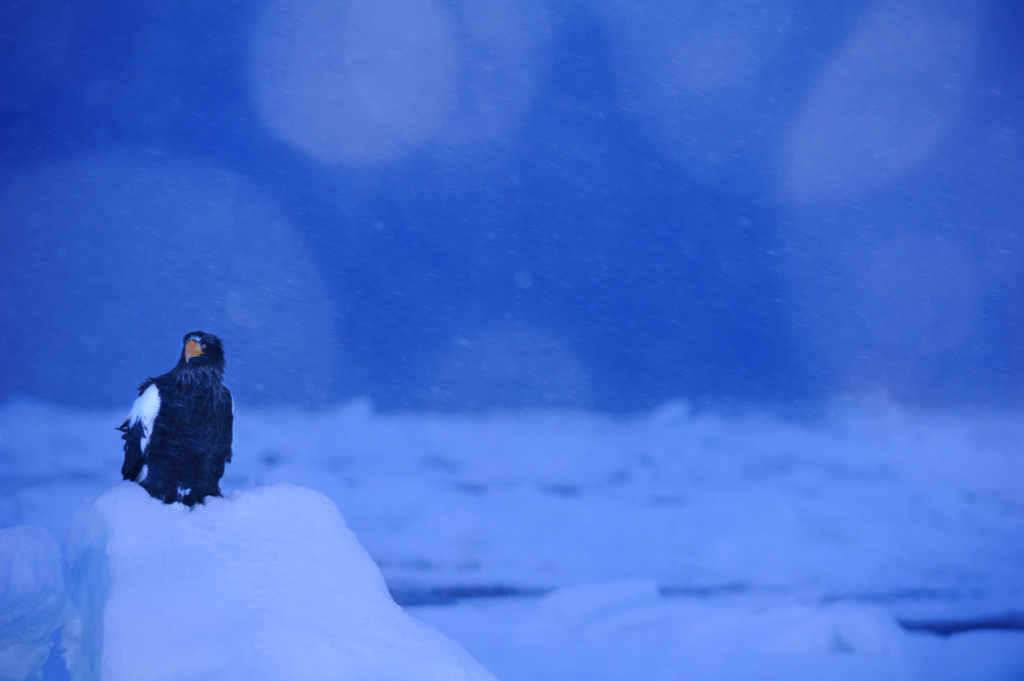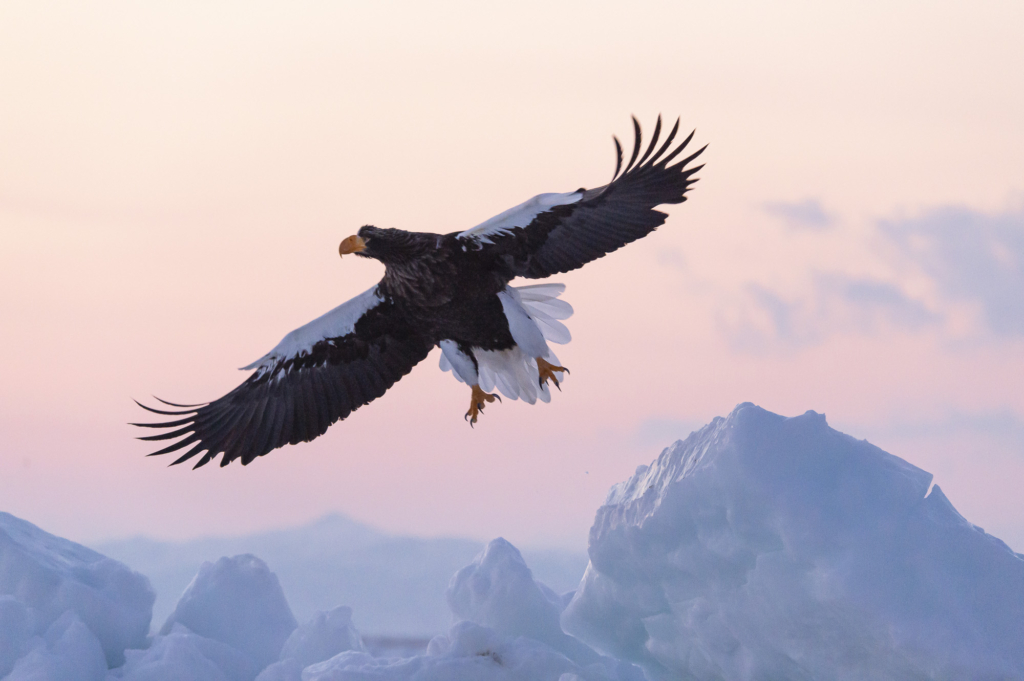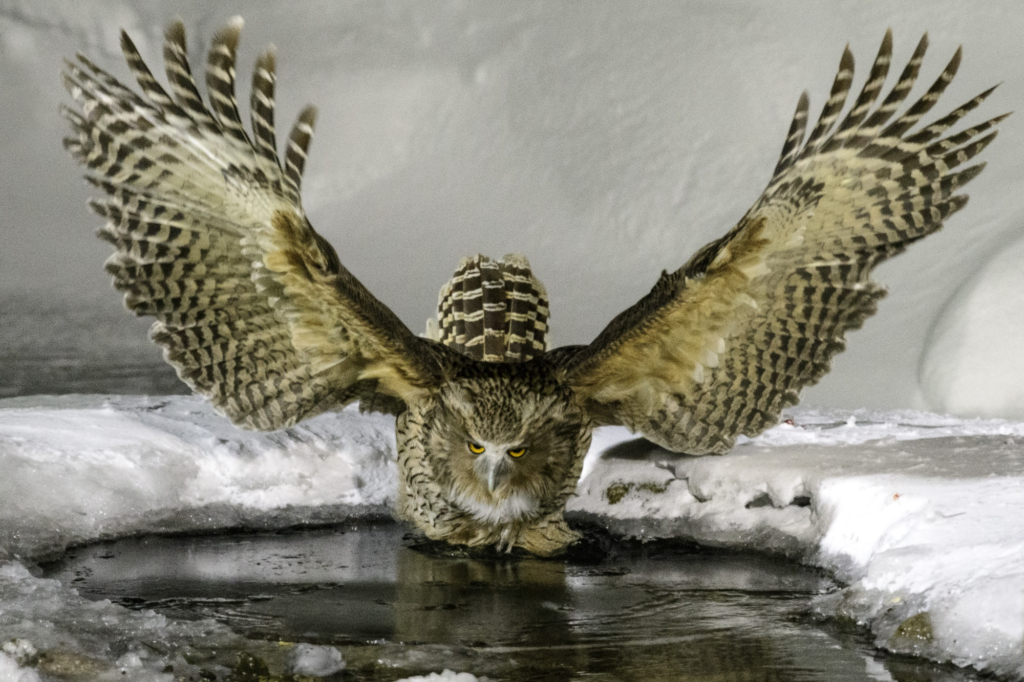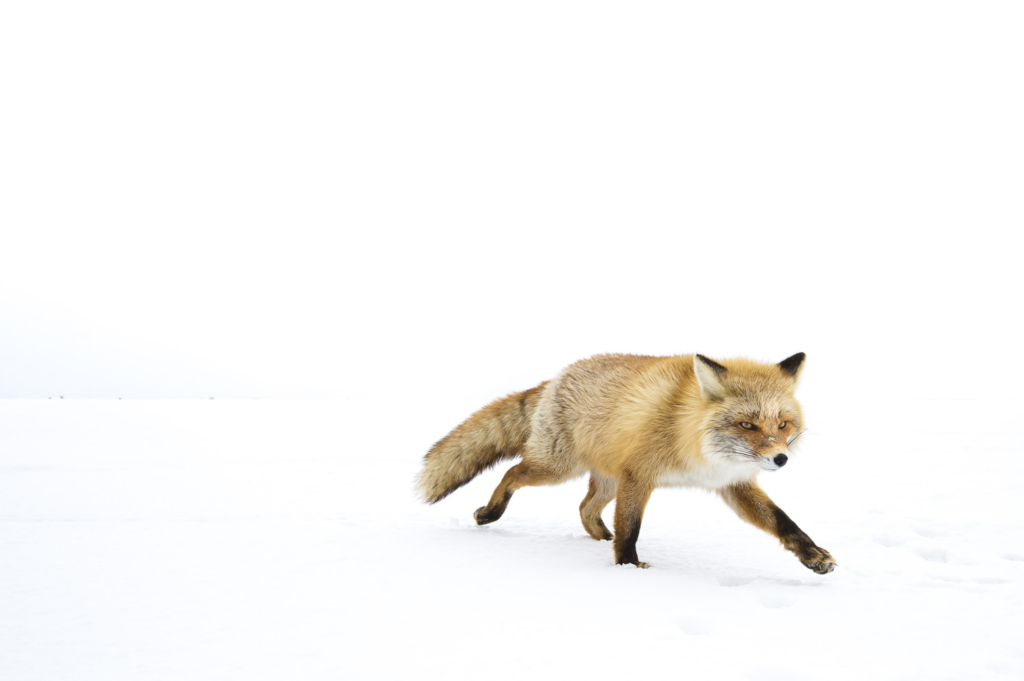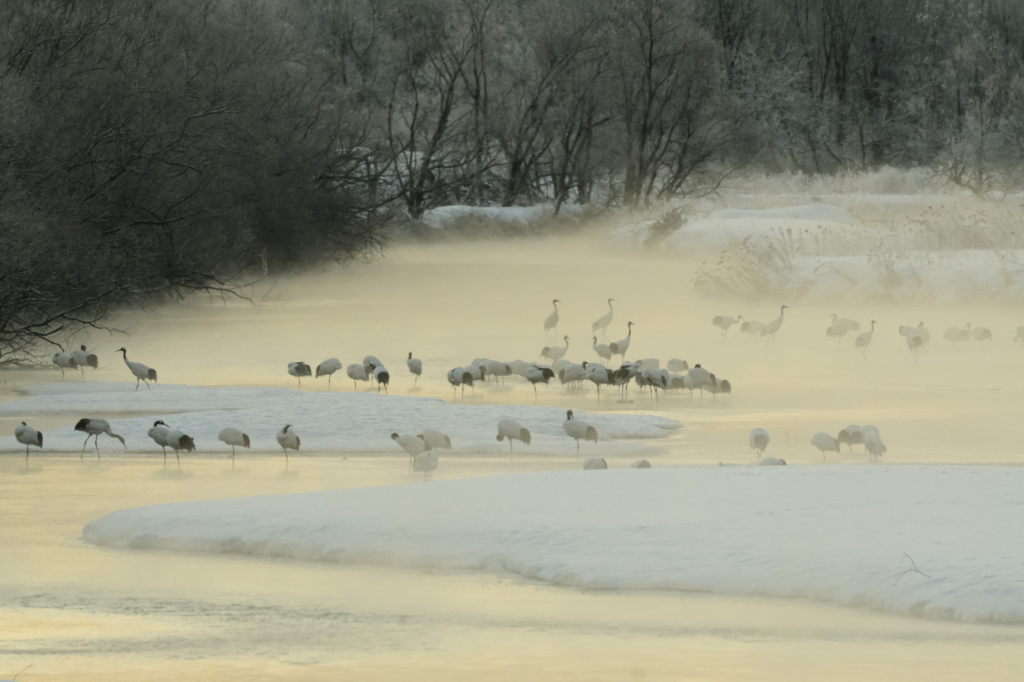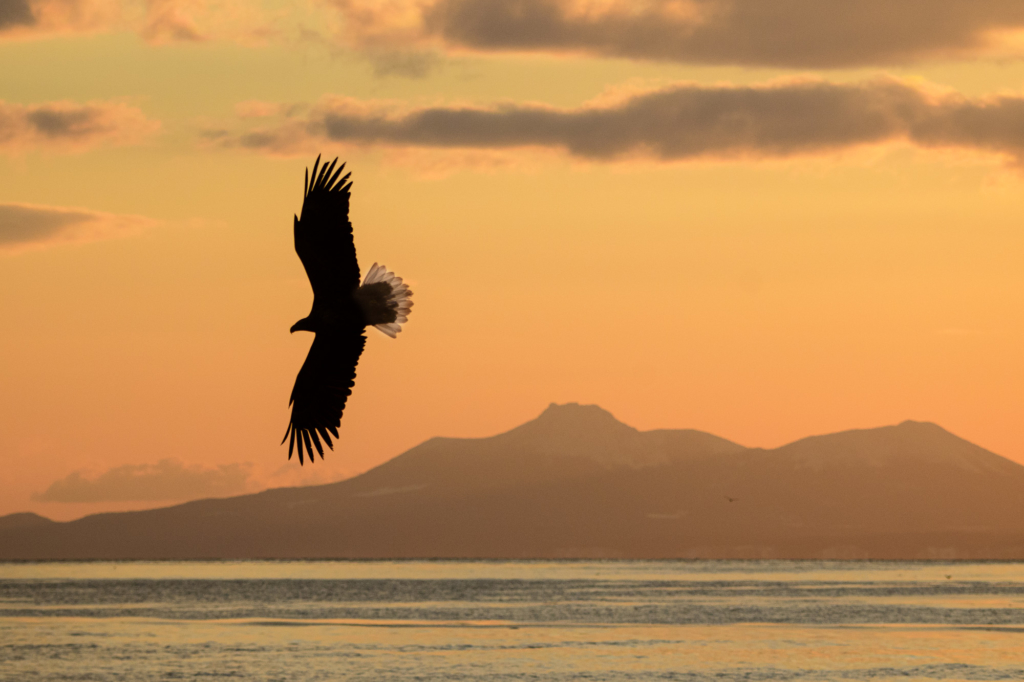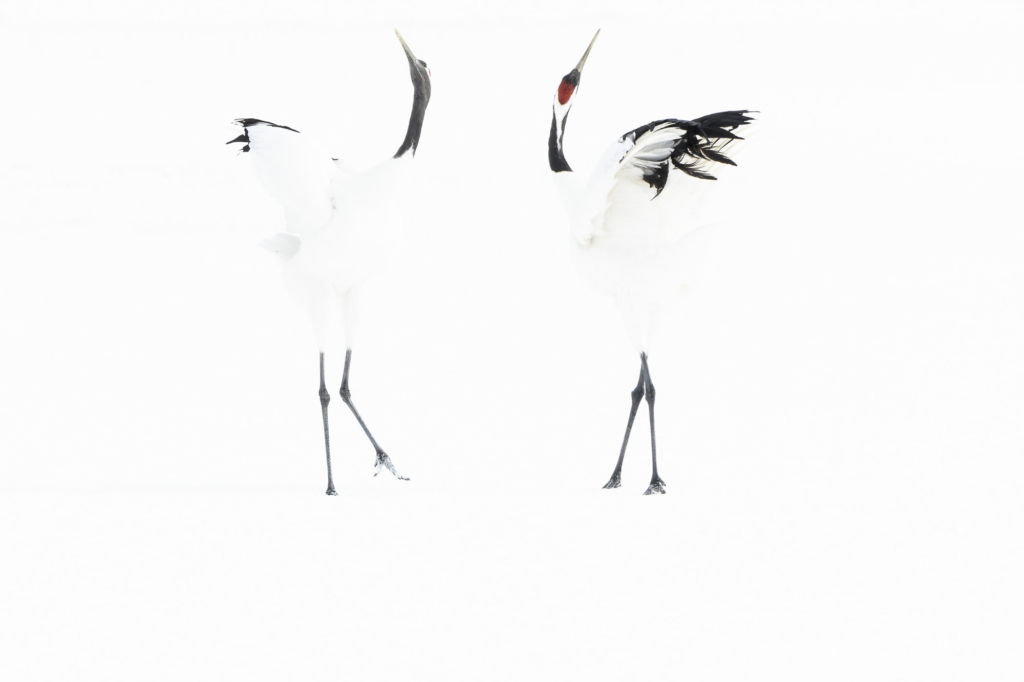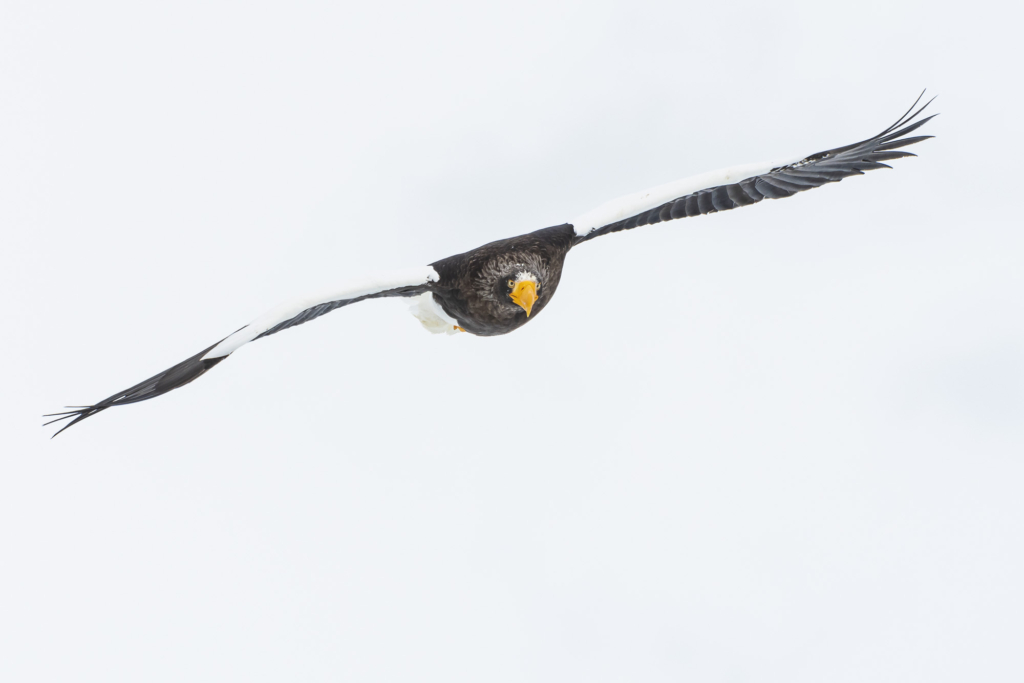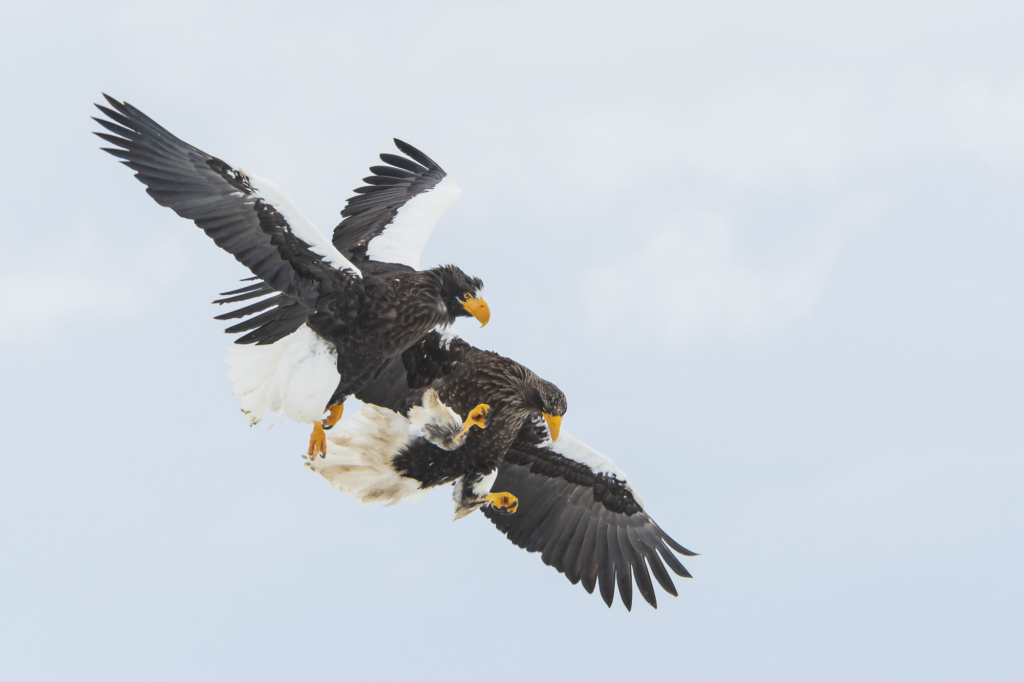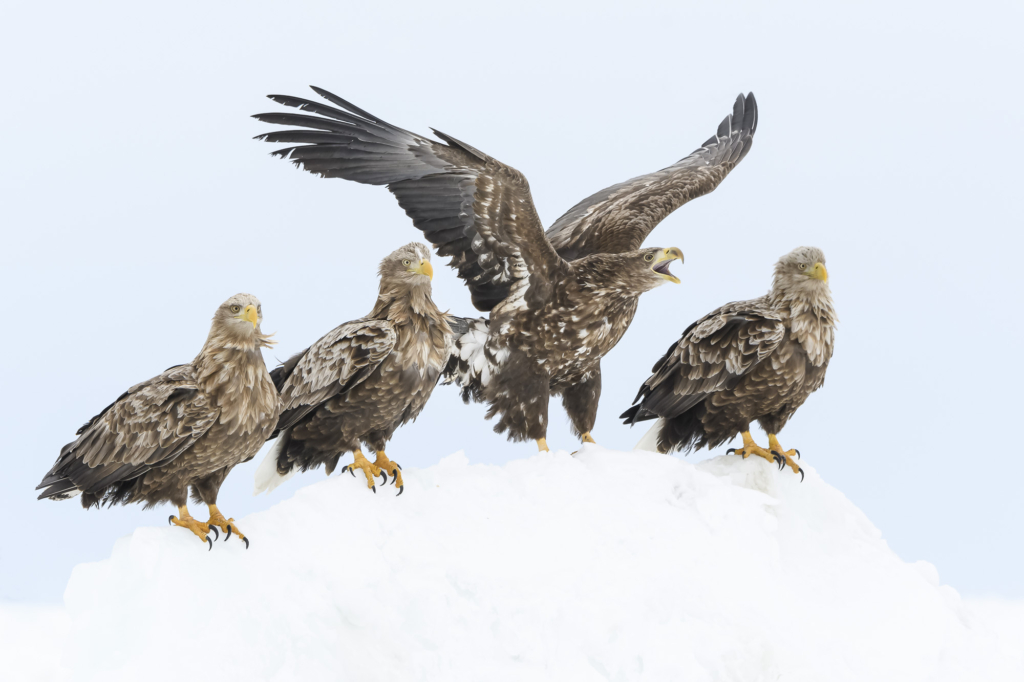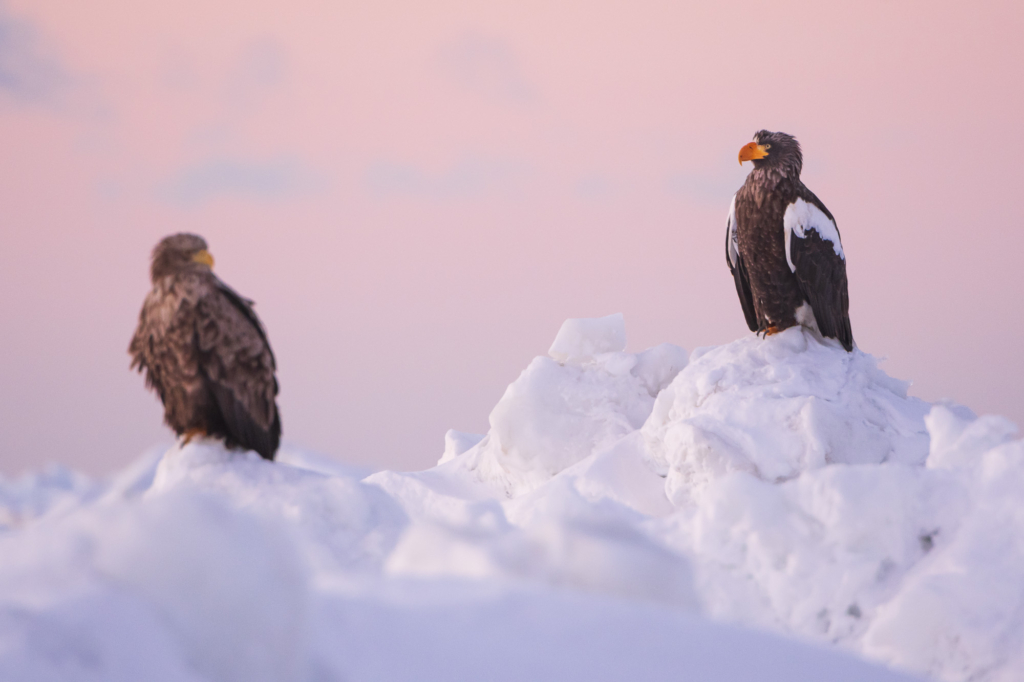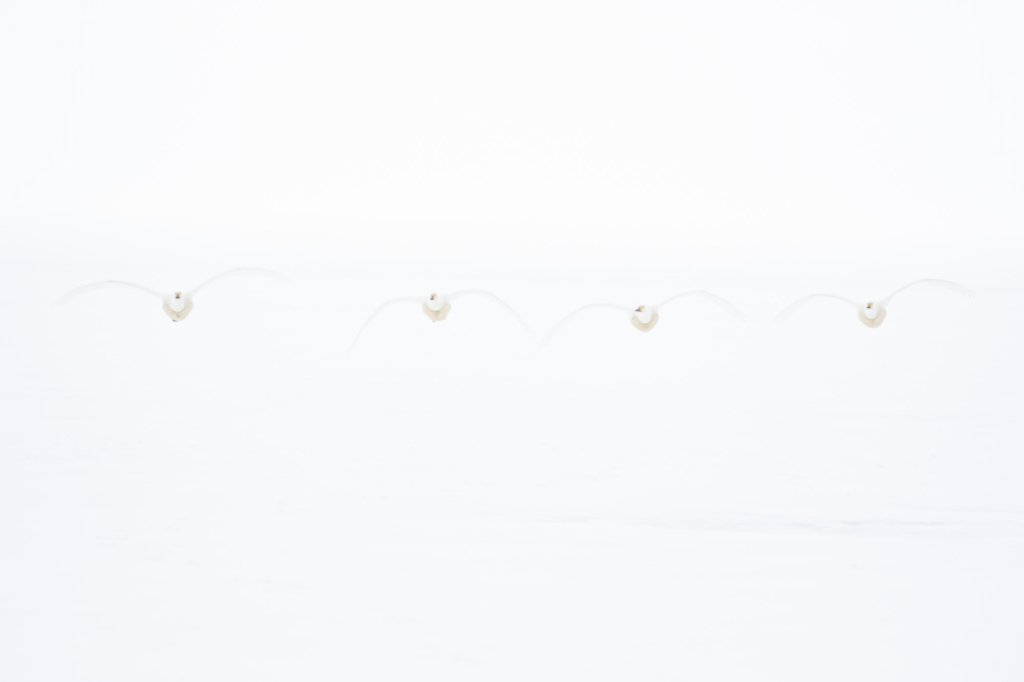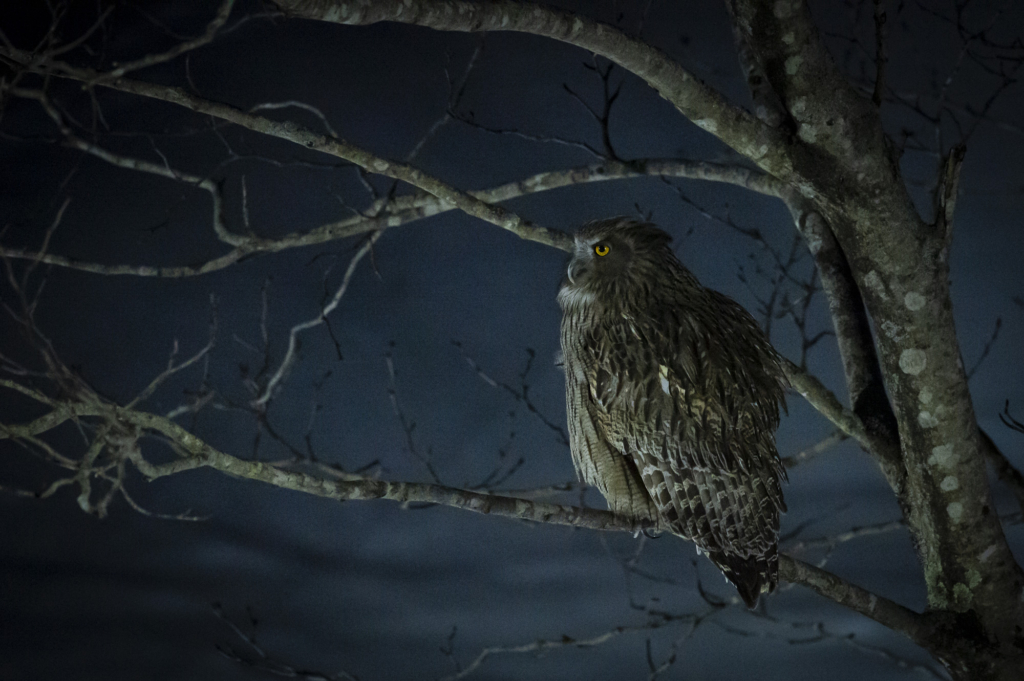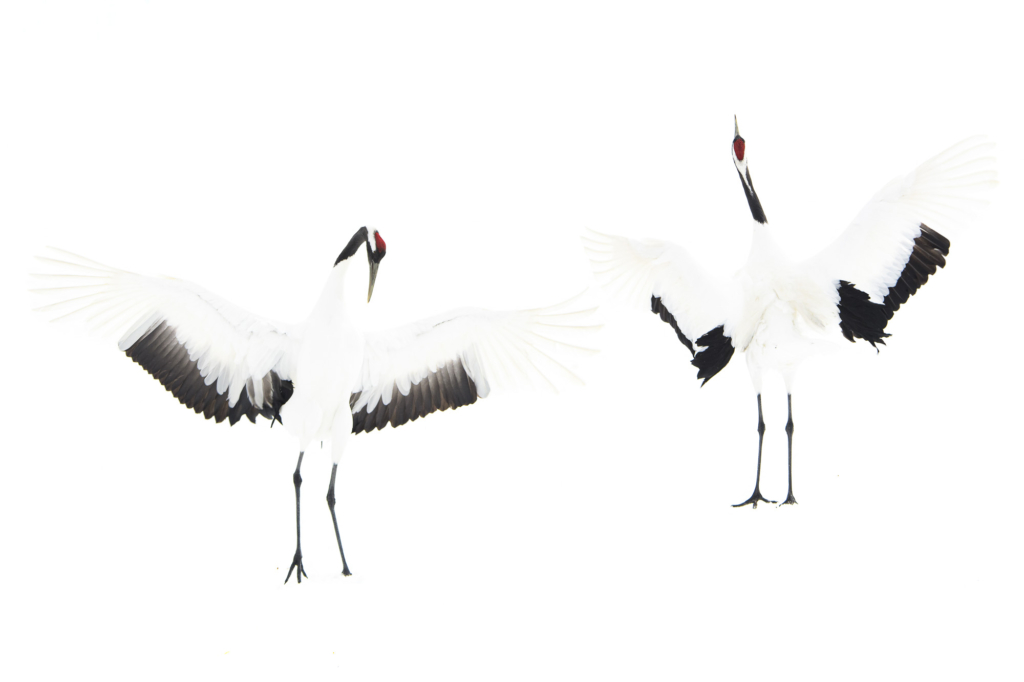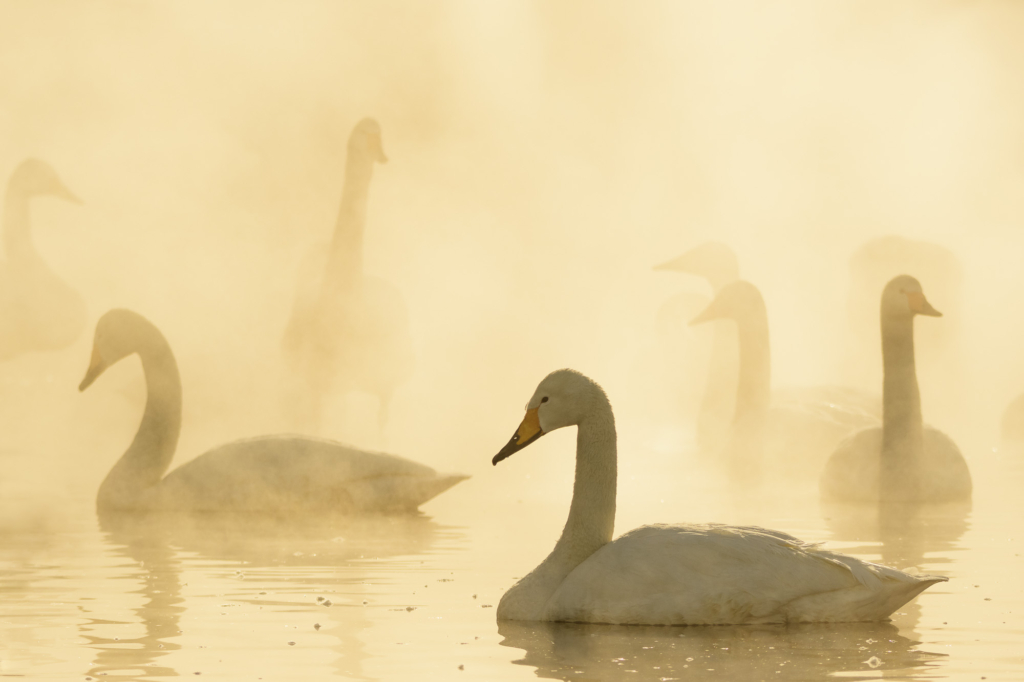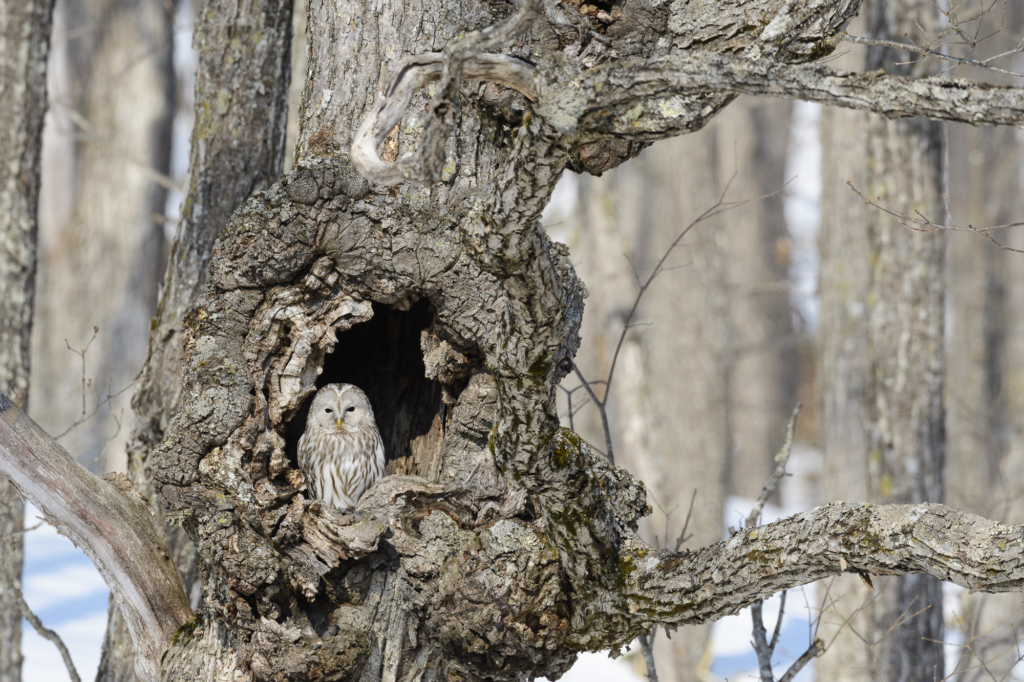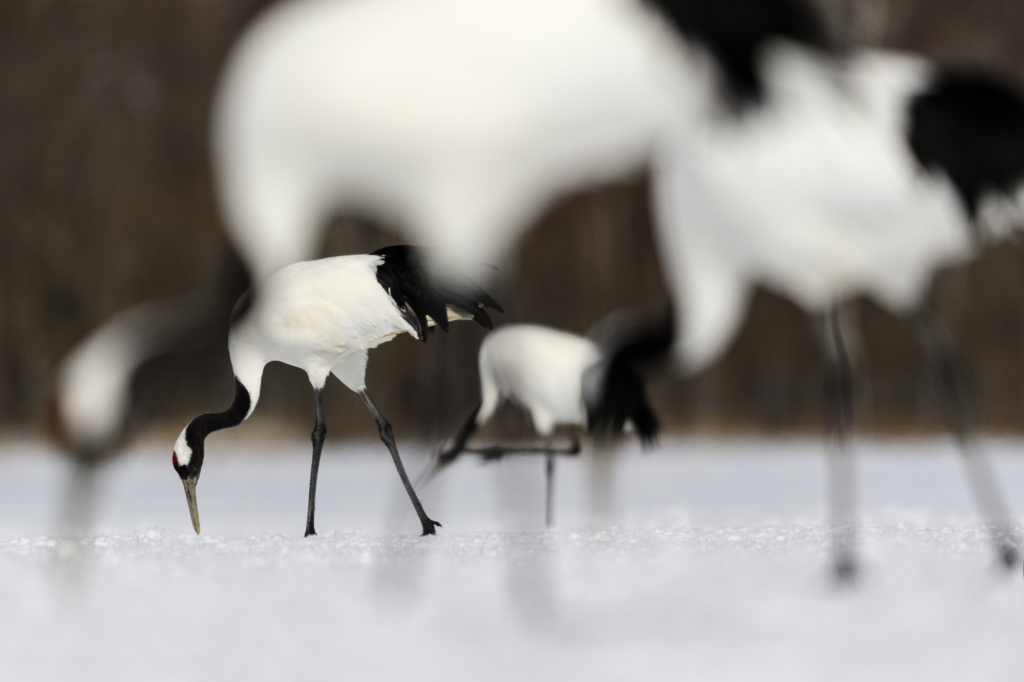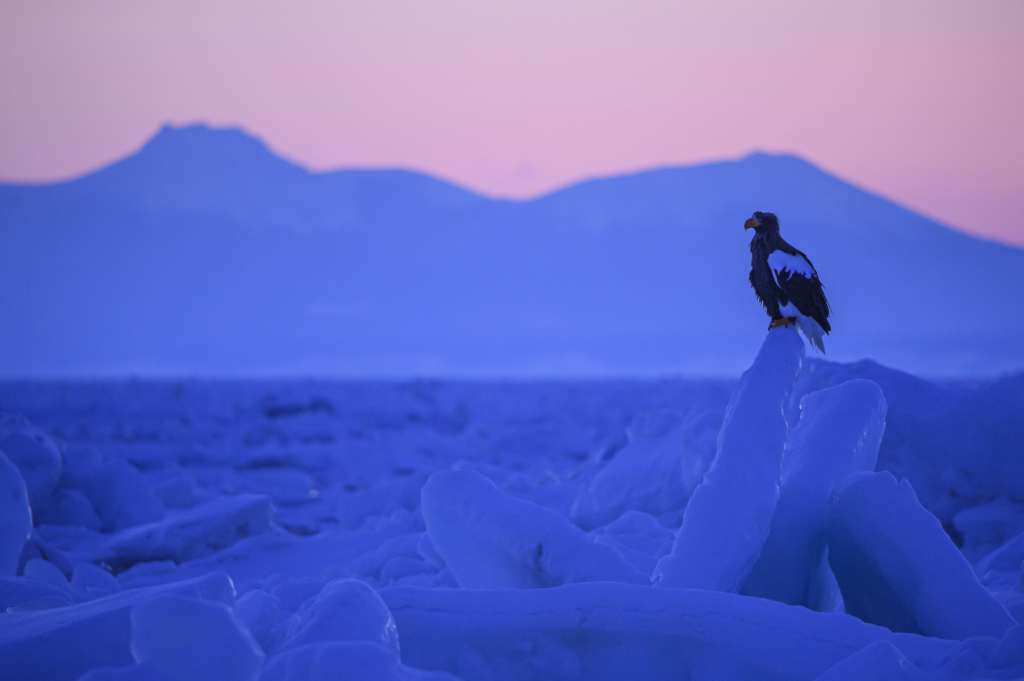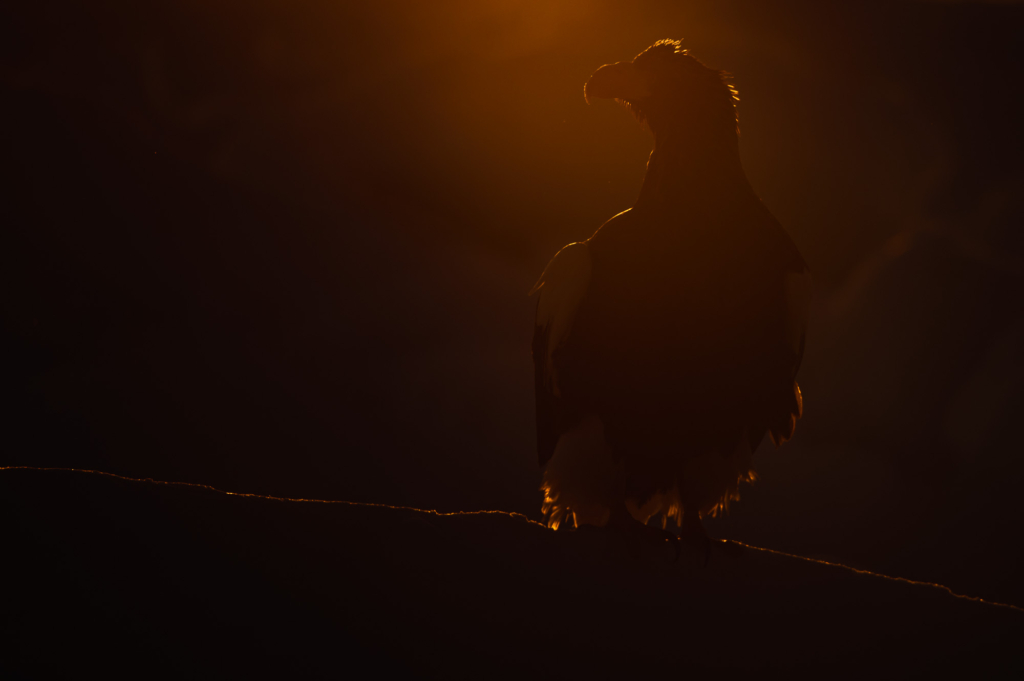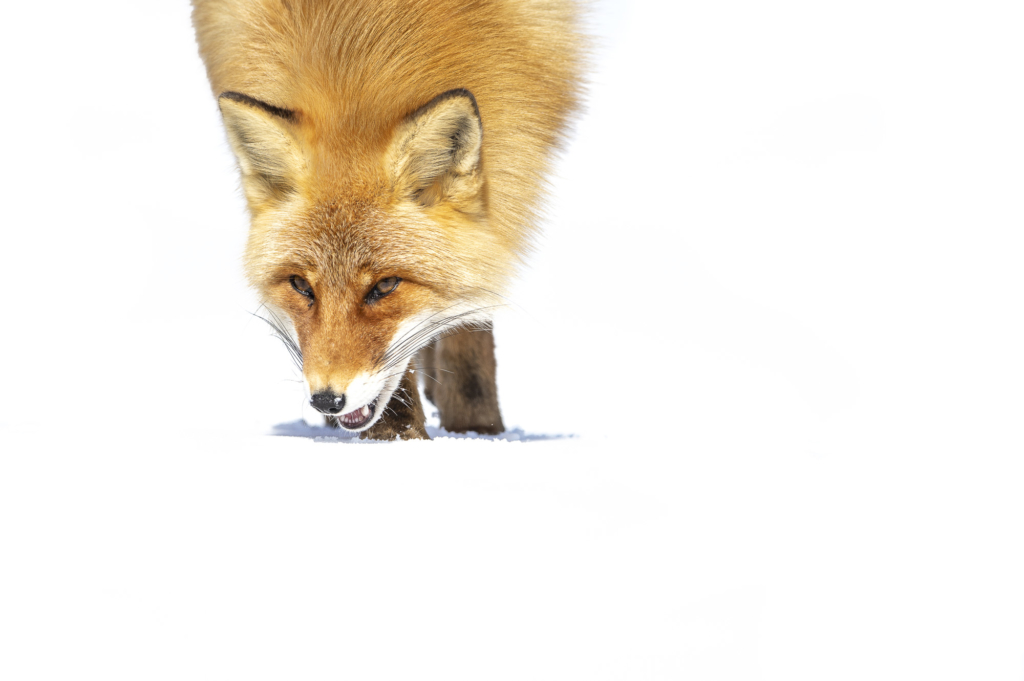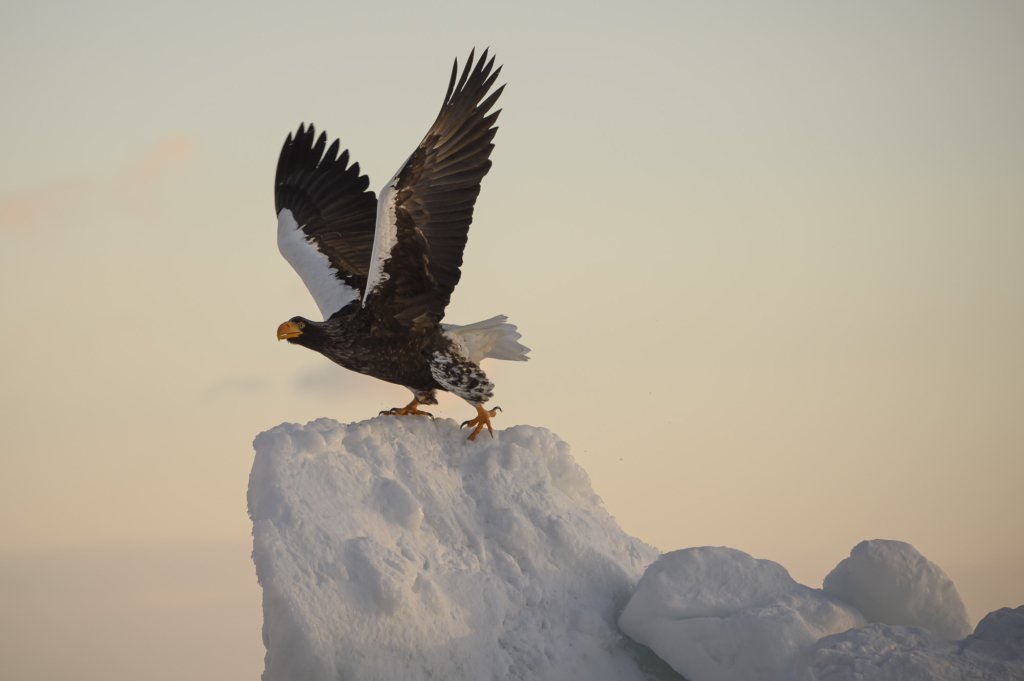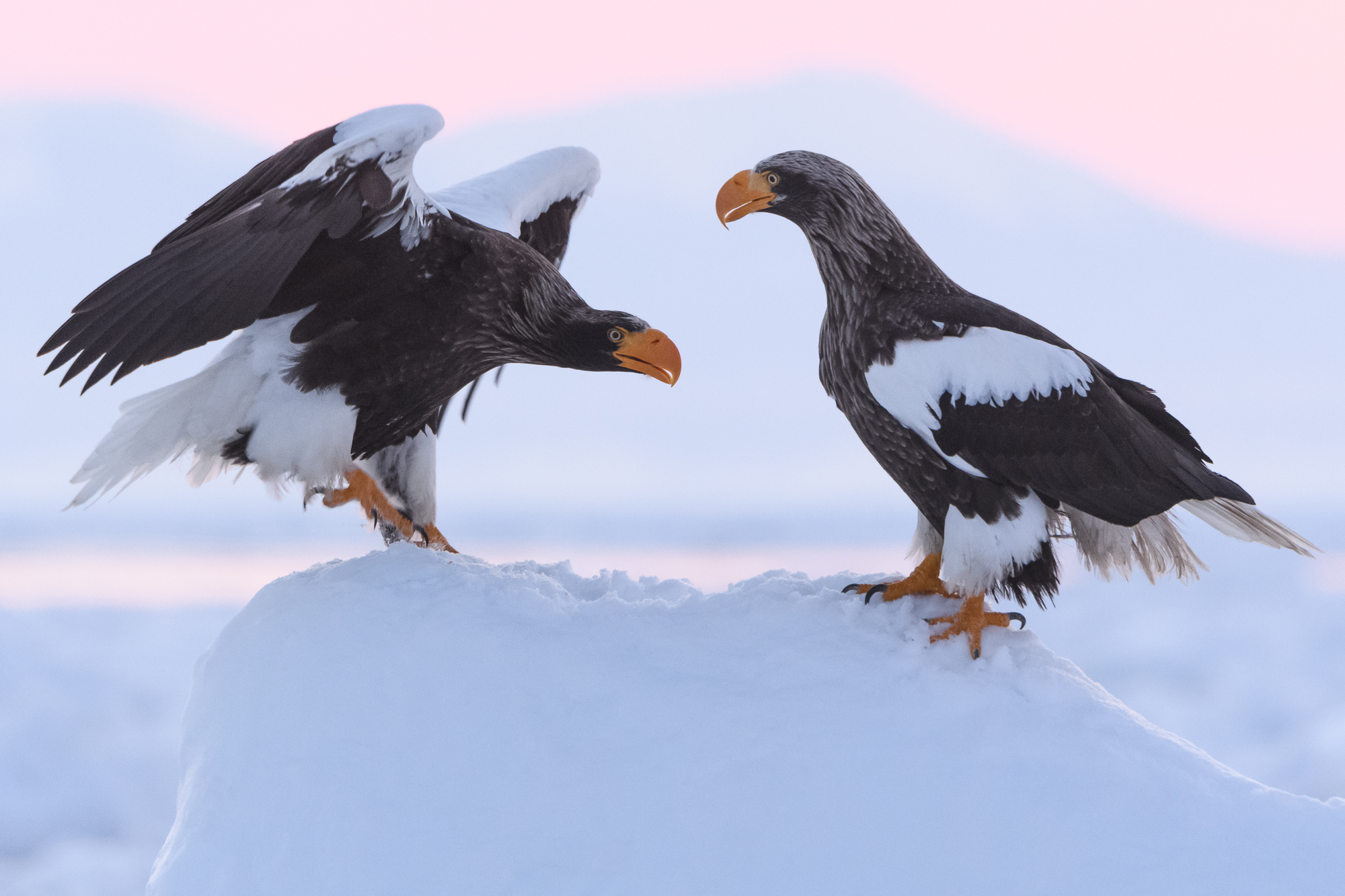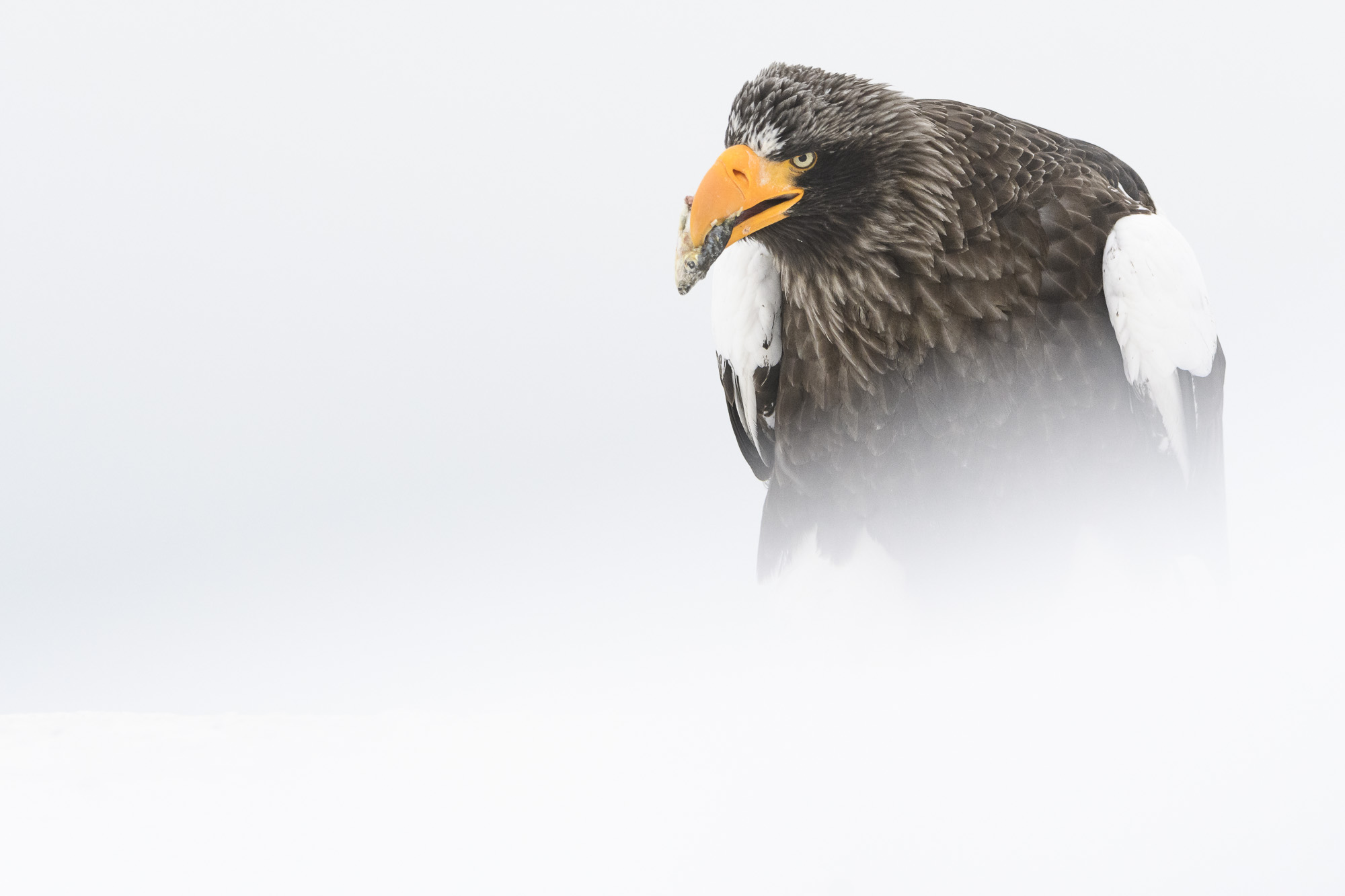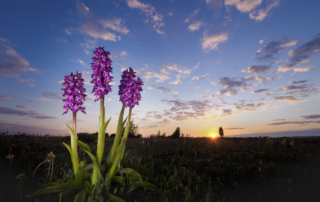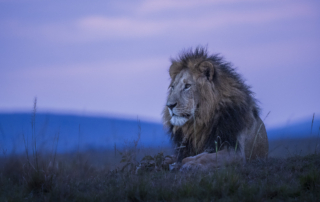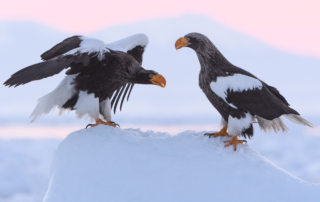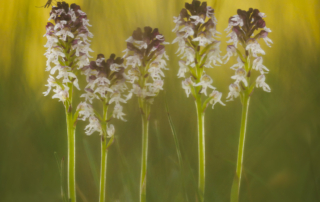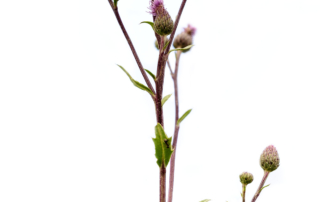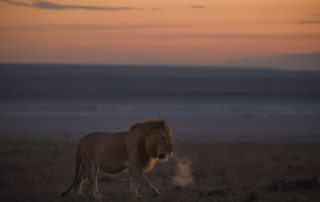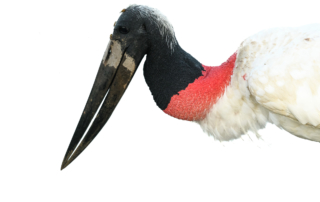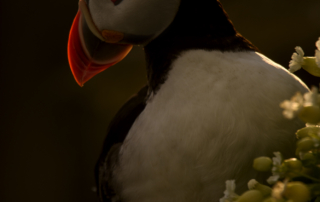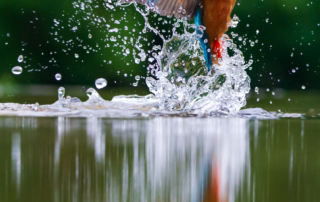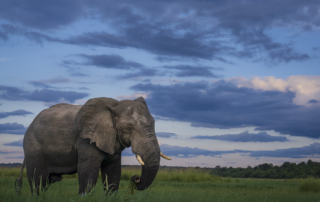Extend your tour with – Marvelous macaques, Japan 13th-16th February 2023.
Read more here…

Visiting Japan in the winter time is a natural experience that lacks comparison. Japan provides us with a snow-covered mountain landscape that not only gives us amazing opportunities for landscape photography, but also a beautiful background when we photograph animals and birds. We will have unique encounters with Japanese Macaques, Steller’s Sea Eagle, Blakiston’s Fish-Owl, as well as the national bird of Japan, the Red-Crowned Crane. We will often get very close to the animals and be able to get spectacular pictures.
Japan also offers a fantastic cultural experience. Abundant Shinto temples show that religion is practiced all over the area. We will also visit traditional Japanese guesthouses, so-called ryokans. Our accommodation will often have traditional onsen baths, filled with water from hot springs. Japanese food is of very high standard, and we will be served traditional food during the tour.
The photo tour is planned in order to give us the best opportunities to photograph the iconic wildlife of Japan. Our tour starts on the northernmost island in Japan, Hokkaido, where we will amongst other things see the national bird of Japan, the Red-Crowned Crane. In Akan National Park we will have close encounters with not only the Red-Crowned Crane but also numerous Whooper Swans and hopefully our first meeting with Steller’s Sea Eagle. On the Sea of Ochotsk we head out on to the pack ice, encountering hundreds of Steller’s Sea Eagles and White-Tailed Sea Eagles. The landscape is often spectacular, providing excellent opportunities for landscape photography.
STELLER´S SEAEAGLE ON THE PACK ICE
The harbor town of Rausu will be our base for three days. Our main objective is to get out into the pack ice to meet the Steller’s Sea Eagle. During winter, a large part of the population that nests on the Kamchatka Peninsular can be found on the pack ice of the Sea of Ochotsk. In February, the pack ice is mostly north of Rausu, and provides great opportunity to experience hundreds of eagles, both Steller’s Sea Eagle and the ”ordinary” White-Tailed Sea Eagle. We will spend three mornings exploring the pack ice by boat to photograph the eagles. As the birds are fed with fish, we will often be within a few meters from them, and they are quite unafraid.
Our afternoons will be spent doing landscape photography in and around Shiretoko National Park. We will head out on to the Notsuke Peninsular where the landscape is covered with masses of pack ice and snow, here we normally find Sika deers and Red foxes.
WORLDS LARGEST OWL
During our stay in Rausu we will also visit a place where we hope to photograph the Worlds largest Owl, Blakiston’s Fish Owl. A ”pool” is kept open in a stream, and the owl is fed with fish every evening. Seeing the Owl approach the pool and dive for fish is a magical experience.
AKAN-CHO AND THE RED-CROWNED CRANE
Our first target species here in the north is the Red-Crowned Crane, or Tancho, as it is called in Japanese.Today there are only 2500 of these birds left in the World. The area around Kushiro is the best place in the World to see and photograph these beautiful birds, with half the World population residing here. During winter the birds are fed at a number of sites, providing excellent opportunities to photograph them. Depending on weather and light conditions we will select different spots for photography. At Akan International Crane Center there is also opportunity to photograph Whooper Swans, Black Kites, White-Tailed Sea Eagles and hopefully our first encounter with Steller’s Sea Eagle. Mammals also visit the area, mainly Sika Deer, but foxes are also regular visitors.
WINTERING WHOOPER SWANS AT LAKE KUSSHARO
From Kushiro we head for Japan’s largest crater lake, Lake Kussharo. During winter-time the lake freezes over except for some spots kept open by warm water from hot springs. Here, hundreds of Whooper Swans spend the winter. The birds are unafraid and can be photographed with a wide-angle lens to include the landscape in the background. Weather-permitting, we will head up the Bihoro Pass to photograph Lake Kussharo from above. With a bit of luck we will see flocks of Whooper Swans flying in towards the lake. We will also visit the volcanic area of louzan (sulpher mountain).
This tour is not only for the most dedicated nature photographer, but also for those who wish to experience some of the finest National Parks in the World, with wildlife at close range, in spectacular surroundings.
During the tour we will have time for photographic workshops, e.g. covering techniques for the following days photography. We will also cover composition and look at each others images, all in order to improve your photography.
Itinerary
Day 1 (16/2) (Dinner)
Arrival at Kushiro Airport. Transfer to hotel.
Day 2 (17/2) (Breakfast – Dinner)
We spend the whole day photographing Red-Crowned Cranes. For the morning session we choose the best sites according to weather. We will spend some of the day at the different feeding stations for cranes. There, you can photograph Whooper Swans, White-Tailed Sea Eagles, Sika Deer and Fox.
Day 3 (18/2) (Breakfast – Dinner)
Just like the previous day we photograph Cranes in the morning. After an early lunch we head for Lake Kussharo, stopping on the way to photograph landscapes when there is an opportunity. Depending on when we arrive at Lake Kussharo there will be a chance to photograph Whooper Swans.
Day 4 (19/2) (Breakfast – Dinner)
We spend the day by and around Lake Kussharo, photographing Whoopr Swans at different sites. If weather and road conditions permit we will go to the Bihoro Pass in the morning for some landscape photography.
Day 5 (20/2) (Breakfast – Dinner)
Depending on weather and the results of the previous day’s photography we might head for the Bihoro Pass in the morning. The rest of the morning is spent at Lake Kussharo photographing Whooper Swans. After lunch we head for Rausu. On the way, we stop at louzan, Sulphur Mountain. The area is volcanically active and there is a chance to photograph sulphur springs and other volcanically active things.
Day 6-8 (21-23/2) (Breakfast – Dinner)
The days begin with boat trips out into the drift ice in the Sea of Ochotsk to photograph Steller’s Sea Eagle and White-tailed Sea Eagles. Here, there are incredibly good conditions for photographing these birds of prey. In the afternoons we will look for photogenic birds in the surrounding ports and go to the Notsuke Penisula to look for Sika deer and foxes. On the evenings of 21st and 22nd February, we visit a place where we hope to photograph the world’s largest owl, Blakiston’s fish owl. On February 23, we leave Rausu during the day and slowly make our way to our hotel in Nakashibetsu. Here we will have good chances to photograph Japanese sabel.
Day 9 (24/2) (Breakfast)
In the morning we can photograph around the accommodation or just take it easy. Around lunchtime we go to Kushiro and in the afternoon, early evening we fly back home.
Photographic leader
Henrik Karlsson, born in 1968, is a photographer, writer and conservation biologist.
Henrik is a trained biologist and used to work with water and conservation issues.
He is an ambassador for OM SYSTEM and has been appointed as a National Geographic Explorer and is a member of the Swedish Nature Photographers Association (Naturfotograferna/N) as well as PhotoNatura. In 2003 he was awarded Naturfotografernas/N and Kodak’s scholarship. Henrik has also won awards in several European photo competitions.
Henrik has a wide selection when it comes to subjects to take images of and tell stories about. He will be more than happy to photograph everything from insects to the orchids in the forest or the great wild animals around the world. He has the whole world as his photographic field but is more and more drawn to Africas beauty and wildness.
Previously, Henrik worked as a guide in several Swedish Nature Reserves and National Parks. He is a frequent lecturer and an appreciated guide on photo courses and workshops. He also leads photo tours all over the world.
In 2011 Henrik self-published the book ”Mångfaldens ö – bilder och tankar från Ölands natur”, and the book ”Vilda Norden” was published in 2017. 2020 he published the book Ölands orkidéer and in 2021 Orkidéer på Gotland.
